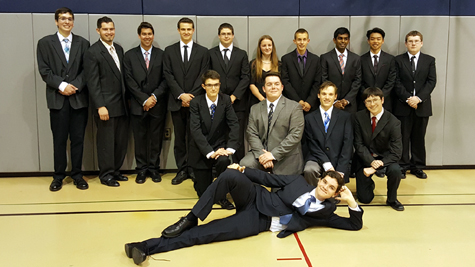
BCS Technologies running the Scanning Electron Microscope.

BCS Technologies running the Scanning Electron Microscope.

2014-2015 Senior EDD research students.

Mr. Boyer Introduction.

Mr. Boyer's daughter, Claudia, at the Zeiss microscope.

Research team: Electrifiber.

Gifted mentorship student: Jason Blocklove.

Gifted mentorship student: Jason Blocklove.

Angstrom Scientific: Hitachi 3030 SEM

Electrospinning station

Research team: BCS Technologies

Research team: BCS Technologies.

Visitor viewing electrospinning station.

Research team: BCS Technologies

Research team: BCS Technologies.

Research team: BCC Biotech

Research team: DeltaTech.

Scanning electron microscope.

Research team: Valence.

Research team: Valence.

Research team: Electrifiber

Electrospinning Station
|


